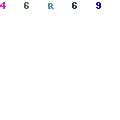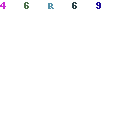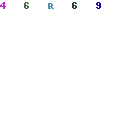Museum art ‘abroad’ — at EAC
 SIUE’s University Museum broadened its reach in the Edwardsville community this summer.
SIUE’s University Museum broadened its reach in the Edwardsville community this summer.
Keeping in pattern with the idea that art is to be seen and experienced, Eric Barnett, University Museum director, responded to a request from the Edwardsville Arts Center (EAC). EAC approached Barnett about borrowing an outdoor sculpture from the museum. EAC is in the process of establishing a sculpture garden, according to Barnett.
The mission of EAC is “to inspire the lives of youth and the creative spirit of adults through classes, exhibits, and cultural events,” according to the Edwardsville Arts Center webpage. The Arts Center is located on the campus of Edwardsville High School, with the loaned sculpture placed near to the main entrance. The loaned sculpture will be at the EAC for approximately one year.
The sculpture, owned by SIUE’s University Museum, was purchased in 1981 with a grant from the Illinois Arts Council through the Partners in Purchase program. The Partners in Purchase program is a grant program that requires grantees to purchase art work from local, Illinoisan artists. SIUE has purchased 70 pieces through this program. The loaned sculpture is one of the Partners in Purchase acquisitions.
The sculpture, entitled Elegy #1 was created by Ed McCullough. McCullough was born in Danville, IL but spent much of his childhood in the south side of Chicago in the 1940’s and ’50’s, according to his website. McCullough earned his B.S. and M.S. from Illinois State University in 1962 and ’66, respectively. Since then, he has taught at Illinois Wesleyan, and Columbia College in Chicago. McCullough has received two fellowship grants from the National Endowment for the Arts.
Elegy #1 is part of a ten piece set called simply the Elegy Series that McCullough created between 1980 and 1987, according to a statement provided by Barnett. The statement reads that “McCullough acknowledges inspiration from the poem cycle, The Duino Elegies, by the German poet Rainer Maria Rilke which were written between 1912 and 1922. As with those poems, the ten sculptures in the Elegy series were created as responses to our transitory place among all the transitory elements that comprise nature in the widest sense of the word.”
 Elegy #1 is constructed from Cor-ten steel, which is often used in outdoor construction projects. According to the statement provided by Barnett, “This type of steel develops a protective patina of oxidation which inhibits the penetration of moisture and subsequent oxidation deeper into the core of the steel.”
Elegy #1 is constructed from Cor-ten steel, which is often used in outdoor construction projects. According to the statement provided by Barnett, “This type of steel develops a protective patina of oxidation which inhibits the penetration of moisture and subsequent oxidation deeper into the core of the steel.”
People are meant to interact with McCullough’s sculptures. According to a statement found on McCullough’s website, his “sculptures are meant to be public works of art. I want them to invite people to come inside them, to be a part of them. It is the single individual to whom these pieces speak, whether that person is in a crowd or is standing alone.”
Filed Under: Faculty News












